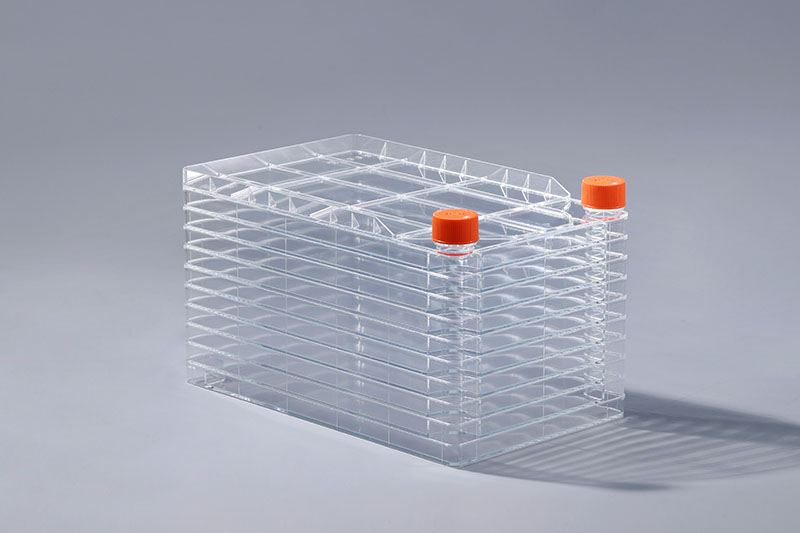Injection molding is a common processing method for various polymer materials, from plastic trinkets, toys, to auto parts, bottles, containers, and mobile phone casings. This processing method is used in all walks of life. The cell factory used in large-scale cell culture is also produced by the injection molding process.
The injection molding process is to use an injection molding machine to heat, plasticize and melt the plastic, and then inject it into the cavity of the molding mold for molding. After cooling, the melt is solidified and then demolded. This processing method has the following advantages:
1. It is suitable for the production of complex precision products. The injection molding process can easily design complex plastic precision parts and assemblies. Compared to other techniques, injection molding will find features with very small tolerances.
2. Reduce waste: all the parisons made by injection can be blown into the blow mold, and no waste is generated during the processing, which reduces the waste of molding materials.
3. The quality of the finished product is good: the cell factory with smooth surface can be obtained without scratches.
4. High degree of automation: Most injection molding processes are carried out using machines and robots. As automation reduces manufacturing costs, overhead costs are also reduced. Multi-mode production, high production efficiency.
The above are the four major advantages of the injection molding process of the cell factory. Because of the multi-layer structure, after each layer is produced, it needs to go through a special welding or gluing process to combine the layers to make a complete set of products.
The FAI climbed 5.9 percent year-on-year in the first 11 months of 2018, quickening from the 5.7-percent growth in Jan-Oct, the National Bureau of Statistics (NBS) said Friday in an online statement.
The key indicator of investment, dubbed a major growth driver, hit the bottom in August and has since started to rebound steadily.
In the face of emerging economic challenges home and abroad, China has stepped up efforts to stabilize investment, in particular rolling out measures to motivate private investors and channel funds into infrastructure.
Friday's data showed private investment, accounting for more than 60 percent of the total FAI, expanded by a brisk 8.7 percent.
NBS spokesperson Mao Shengyong said funds into weak economic links registered rapid increases as investment in environmental protection and agriculture jumped 42 percent and 12.5 percent respectively, much faster than the average.
In breakdown, investment in high-tech and equipment manufacturing remained vigorous with 16.1-percent and 11.6-percent increases respectively in the first 11 months. Infrastructure investment gained 3.7 percent, staying flat. Investment in property development rose 9.7 percent, also unchanged.
 English
English



















































